The Well-Tempered Ear
Here are the classical music nominations for the 63rd annual Grammy Awards in 2021
3 Comments
PLEASE HELP THE EAR. IF YOU LIKE A CERTAIN BLOG POST, SPREAD THE WORD. FORWARD A LINK TO IT OR, SHARE IT or TAG IT (not just “Like” it) ON FACEBOOK. Performers can use the extra exposure to draw potential audience members to an event. And you might even attract new readers and subscribers to the blog.
By Jacob Stockinger
It’s time again for the annual Grammy Awards (below).
Although determined by the recording industry and often considered promotional marketing, they might be more helpful given the peculiar circumstances of the past year.
After all, the coronavirus pandemic has changed our listening habits.
Perhaps you now listen mostly via computer to virtual online concerts and performances that are streamed.
Perhaps you listen to Compact Discs using home stereo systems.
Perhaps you subscribe to a streaming service such as Apple Music, Amazon Music, Spotify and others.
However you listen to music, you might find the following list useful, especially as it comes at the beginning of the holiday shopping and gift-giving season.
You might also find the nominations for the 63rd annual Grammy Awards informative about individual musicians and musical groups in your area.
They can help you judge how many or how few contemporary composers and new works get performed.
Performers provide other examples. You might find it interesting, for example, that soprano Sarah Brailey (below) has been nominated for her role in the solo vocal work “The Prison” by Ethel Smyth. Brailey is a graduate student at the University of Wisconsin-Madison Mead Witter School of Music and a co-founder and performer of the free monthly Just Bach concerts.
Pianist Shai Wosner (below, in a photo by Marco Borggreve), who played late Schubert sonatas at the Salon Piano Series at Farley’s House of Pianos, is included in a list of producer awards for his recording of those sonatas.
The Milwaukee Symphony Orchestra and Florentine Opera have been nominated for a recording of Carlisle Floyd’s opera “Prince of Players.”
Conductor Julian Wachner (below top), violinist Augustin Hadelich (below middle) and pianist Jonathan Biss (below bottom) have all performed with the Madison Symphony Orchestra, some more than once.
Soprano Laquita Mitchell (below) — who has sung with the Madison Opera — has been nominated for her performance in the choral work “Sanctuary Road” by Paul Moravec.
Cellist Matt Haimovitz (below top) and composer Luna Pearl Woolf (below bottom) have been nominated for the latter’s “Fire and Flood.” Both have appeared with UW-Madison orchestral and choral groups.
If you notice more local connections, please leave word in the Comment section.
The winners will be announced on CBS Television the evening of Sunday, Jan. 31, 2021.
73. Best Engineered Album, Classical
An Engineer’s Award. (Artist names appear in parentheses.)
· DANIELPOUR: THE PASSION OF YESHUA
Bernd Gottinger, engineer (JoAnn Falletta, James K. Bass, Adam Luebke, UCLA Chamber Singers, Buffalo Philharmonic Orchestra & Buffalo Philharmonic Chorus)
· GERSHWIN: PORGY AND BESS
David Frost and John Kerswell, engineers; Silas Brown, mastering engineer (David Robertson, Eric Owens, Angel Blue, Metropolitan Opera Orchestra & Chorus)
· HYNES: FIELDS
Kyle Pyke, engineer; Jesse Lewis and Kyle Pyke, mastering engineers (Devonté Hynes & Third Coast Percussion)
· IVES: COMPLETE SYMPHONIES (below)
Alexander Lipay and Dmitriy Lipay, engineers; Alexander Lipay and Dmitriy Lipay, mastering engineers (Gustavo Dudamel and Los Angeles Philharmonic)
· SHOSTAKOVICH: SYMPHONY NO. 13, ‘BABI YAR’
David Frost and Charlie Post, engineers; Silas Brown, mastering engineer (Riccardo Muti and Chicago Symphony Orchestra)
· 
74. Producer Of The Year, Classical
A Producer’s Award. (Artist names appear in parentheses.)
· BLANTON ALSPAUGH
• Aspects Of America – Pulitzer Edition (Carlos Kalmar and Oregon Symphony)
• Blessed Art Thou Among Women (Peter Jermihov, Katya Lukianov and PaTRAM Institute Singers)
• Dvorak: Symphony No. 9; Copland: Billy The Kid (Gianandrea Noseda and National Symphony Orchestra)
• Glass: The Fall Of The House Of Usher (Joseph Li, Nicholas Nestorak, Madison Leonard, Jonas Hacker, Ben Edquist, Matthew Adam Fleisher and Wolf Trap Opera)
• Kahane: Emergency Shelter Intake Form (Alicia Hall Moran, Gabriel Kahane, Carlos Kalmar and Oregon Symphony)
• Kastalsky: Requiem (Leonard Slatkin, Steven Fox, Benedict Sheehan, Charles Bruffy, Cathedral Choral Society, The Clarion Choir, The Saint Tikhon Choir, Kansas City Chorale and Orchestra Of St. Luke’s)
• Massenet: Thaïs (Andrew Davis, Joshua Hopkins, Andrew Staples, Erin Wall, Toronto Mendelssohn Choir and Toronto Symphony Orchestra)
• Smyth: The Prison (Sarah Brailey, Dashon Burton, James Blachly and Experiential Orchestra)
• Woolf, L.P.: Fire And Flood (Julian Wachner, Matt Haimovitz and Choir Of Trinity Wall Street)
· DAVID FROST (below)
• Beethoven: Piano Sonatas, Vol. 9 (Jonathan Biss)
• Gershwin: Porgy And Bess (David Robertson, Eric Owens, Angel Blue, Metropolitan Opera Orchestra and Chorus)
• Gluck: Orphée ed Eurydice (Harry Bicket, Dmitry Korchak, Andriana Chuchman, Lauren Snouffer, Lyric Opera Of Chicago Orchestra and Chorus)
• Holst: The Planets; The Perfect Fool (Michael Stern and Kansas City Symphony)
• Muhly: Marnie (Robert Spano, Isabel Leonard, Christopher Maltman, Denyce Graves, Iestyn Davies, Janis Kelly, Metropolitan Opera Orchestra and Chorus)
• Schubert: Piano Sonatas, D. 845, D. 894, D. 958, D. 960 (Shai Wosner)
• Shostakovich: Symphony No. 13, ‘Babi Yar’ (Riccardo Muti, Alexey Tikhomirov, Chicago Symphony Orchestra and Chorus)
· JESSE LEWIS
• Gunn: The Ascendant (Roomful Of Teeth)
• Harrison, M.: Just Constellations (Roomful Of Teeth)
• Her Own Wings (Willamette Valley Chamber Music Festival)
• Hynes: Fields (Devonté Hynes and Third Coast Percussion)
• Lang, D.: Love Fail (Beth Willer and Lorelei Ensemble)
• Mazzoli: Proving Up (Christopher Rountree, Opera Omaha and International Contemporary Ensemble)
• Sharlat: Spare The Rod! (NOW Ensemble)
• Soul House (Hub New Music)
• Wherein Lies The Good (The Westerlies)
· DMITRIY LIPAY
• Adams, J.: Must The Devil Have All The Good Tunes? (Yuja Wang, Gustavo Dudamel and Los Angeles Philharmonic)
• Cipullo: The Parting (Alastair Willis, Laura Strickling, Catherine Cook, Michael Mayes and Music Of Remembrance)
• Ives: Complete Symphonies (Gustavo Dudamel & Los Angeles Philharmonic)
• LA Phil 100 – The Los Angeles Philharmonic Centennial Birthday Gala (Gustavo Dudamel and Los Angeles Philharmonic)
• Langgaard: Prelude To Antichrist; Strauss: An Alpine Symphony (Thomas Dausgaard and Seattle Symphony Orchestra)
• Nielsen: Symphony No. 1 and Symphony No. 2, ‘The Four Temperaments’ (Thomas Dausgaard and Seattle Symphony)
· ELAINE MARTONE
• Bound For The Promised Land (Robert M. Franklin, Steven Darsey, Jessye Norman and Taylor Branch)
• Dawn (Shachar Israel)
• Gandolfi, Prior and Oliverio: Orchestral Works (Robert Spano and Atlanta Symphony Orchestra)
• Singing In The Dead Of Night (Eighth Blackbird)
• Whitacre: The Sacred Veil (Eric Whitacre, Grant Gershon and Los Angeles Master Chorale)
75. Best Orchestral Performance
Award to the Conductor and to the Orchestra.
· ASPECTS OF AMERICA – PULITZER EDITION (below)
Carlos Kalmar, conductor (Oregon Symphony)
· CONCURRENCE
Daniel Bjarnason, conductor (Iceland Symphony Orchestra)
· COPLAND: SYMPHONY NO. 3
Michael Tilson Thomas, conductor (San Francisco Symphony)
· IVES: COMPLETE SYMPHONIES
Gustavo Dudamel, conductor (Los Angeles Philharmonic)
· LUTOSLAWSKI: SYMPHONIES NOS. 2 and 3
Hannu Lintu, conductor (Finnish Radio Symphony Orchestra)
76. Best Opera Recording
Award to the Conductor, Album Producer(s) and Principal Soloists.
· DELLO JOIO: THE TRIAL AT ROUEN
Gil Rose, conductor; Heather Buck and Stephen Powell; Gil Rose, producer (Boston Modern Orchestra Project; Odyssey Opera Chorus)
· FLOYD, C.: PRINCE OF PLAYERS
William Boggs, conductor; Keith Phares and Kate Royal; Blanton Alspaugh, producer (Milwaukee Symphony Orchestra; Florentine Opera Chorus)
· GERSHWIN: PORGY AND BESS (below)
David Robertson, conductor; Angel Blue and Eric Owens; David Frost, producer (The Metropolitan Opera Orchestra; The Metropolitan Opera Chorus)
· HANDEL: AGRIPPINA
Maxim Emelyanychev, conductor; Joyce DiDonato; Daniel Zalay, producer (Il Pomo D’Oro)
· ZEMLINSKY: DER ZWERG
Donald Runnicles, conductor; David Butt Philip and Elena Tsallagova; Peter Ghirardini and Erwin Sturzer, producers (Orchestra of The Deutsche Oper Berlin; Chorus of The Deutsche Oper Berlin)
77. Best Choral Performance
Award to the Conductor, and to the Choral Director and/or Chorus Master where applicable and to the Choral Organization/Ensemble.
· CARTHAGE
Donald Nally, conductor (The Crossing)
· DANIELPOUR: THE PASSION OF YESHUA (below)
JoAnn Falletta, conductor; James K. Bass and Adam Luebke, chorus masters (James K. Bass, J’Nai Bridges, Timothy Fallon, Kenneth Overton, Hila Plitmann and Matthew Worth; Buffalo Philharmonic Orchestra; Buffalo Philharmonic Chorus and UCLA Chamber Singers)
· KASTALSKY: REQUIEM
Leonard Slatkin, conductor; Charles Bruffy, Steven Fox and Benedict Sheehan, chorus masters (Joseph Charles Beutel and Anna Dennis; Orchestra Of St. Luke’s; Cathedral Choral Society, The Clarion Choir, Kansas City Chorale and The Saint Tikhon Choir)
· MORAVEC: SANCTUARY ROAD
Kent Tritle, conductor (Joshua Blue, Raehann Bryce-Davis, Dashon Burton, Malcolm J. Merriweather and Laquita Mitchell; Oratorio Society of New York Orchestra; Oratorio Society of New York Chorus)
· ONCE UPON A TIME
Matthew Guard, conductor (Sarah Walker; Skylark Vocal Ensemble)
78. Best Chamber Music/Small Ensemble Performance
For new recordings of works with chamber or small ensemble (24 or fewer members, not including the conductor). One Award to the ensemble and one Award to the conductor, if applicable.
· CONTEMPORARY VOICES
Pacifica Quartet
· HEALING MODES
Brooklyn Rider
· HEARNE, T.: PLACE
Ted Hearne, Steven Bradshaw, Sophia Byrd, Josephine Lee, Isaiah Robinson, Sol Ruiz, Ayanna Woods and Place Orchestra
· HYNES: FIELDS
Devonté Hynes and Third Coast Percussion
· THE SCHUMANN QUARTETS
Dover Quartet
79. Best Classical Instrumental Solo
Award to the Instrumental Soloist(s) and to the Conductor when applicable.
· ADÈS: CONCERTO FOR PIANO AND ORCHESTRA
Kirill Gerstein; Thomas Adès, conductor (Boston Symphony Orchestra)
· BEETHOVEN: COMPLETE PIANO SONATAS (below)
Igor Levit
· BOHEMIAN TALES
Augustin Hadelich; Jakub Hrusa, conductor (Charles Owen; Symphonieorchester Des Bayerischen Rundfunks)
· DESTINATION RACHMANINOV – ARRIVAL
Daniil Trifonov; Yannick Nézet-Séguin, conductor (The Philadelphia Orchestra)
· THEOFANIDIS: CONCERTO FOR VIOLA AND CHAMBER ORCHESTRA
Richard O’Neill; David Alan Miller, conductor (Albany Symphony)
80. Best Classical Solo Vocal Album
Award to: Vocalist(s), Collaborative Artist(s) (Ex: pianists, conductors, chamber groups) Producer(s), Recording Engineers/Mixers with 51% or more playing time of new material.
· AMERICAN COMPOSERS AT PLAY – WILLIAM BOLCOM, RICKY IAN GORDON, LORI LAITMAN, JOHN MUSTO
Stephen Powell (Attacca Quartet, William Bolcom, Ricky Ian Gordon, Lori Laitman, John Musto, Charles Neidich and Jason Vieaux)
· CLAIRIÈRES – SONGS BY LILI and NADIA BOULANGER
Nicholas Phan; Myra Huang, accompanist
· FARINELLI
Cecilia Bartoli; Giovanni Antonini, conductor (Il Giardino Armonico)
· A LAD’S LOVE
Brian Giebler; Steven McGhee, accompanist (Katie Hyun, Michael Katz, Jessica Meyer, Reginald Mobley and Ben Russell)
· SMYTH: THE PRISON
Sarah Brailey and Dashon Burton; James Blachly, conductor (Experiential Chorus; Experiential Orchestra)
81. Best Classical Compendium
Award to the Artist(s) and to the Album Producer(s) and Engineer(s) of over 51% playing time of the album, if other than the artist.
· ADÈS CONDUCTS ADÈS
Mark Stone and Christianne Stotijn; Thomas Adès, conductor; Nick Squire, producer
· SAARIAHO: GRAAL THEATER; CIRCLE MAP; NEIGES; VERS TOI QUI ES SI LOIN
Clément Mao-Takacs, conductor; Hans Kipfer, producer
· SEREBRIER: SYMPHONIC BACH VARIATIONS; LAMENTS AND HALLELUJAHS; FLUTE CONCERTO
José Serebrier, conductor; Jens Braun, producer
· THOMAS, M.T.: FROM THE DIARY OF ANNE FRANK and MEDITATIONS ON RILKE
Isabel Leonard; Michael Tilson Thomas, conductor; Jack Vad, producer
· WOOLF, L.P.: FIRE AND FLOOD
Matt Haimovitz; Julian Wachner, conductor; Blanton Alspaugh, producer
82. Best Contemporary Classical Composition
A Composer’s Award. (For a contemporary classical composition composed within the last 25 years, and released for the first time during the Eligibility Year.) Award to the librettist, if applicable.
· ADÈS: CONCERTO FOR PIANO AND ORCHESTRA
Thomas Adès, composer (Kirill Gerstein, Thomas Adès and Boston Symphony Orchestra)
· DANIELPOUR: THE PASSION OF YESHUA
Richard Danielpour, composer (JoAnn Falletta, James K. Bass, Adam Luebke, UCLA Chamber Singers, Buffalo Philharmonic Orchestra & Buffalo Philharmonic Chorus)
· FLOYD, C.: PRINCE OF PLAYERS (below)
Carlisle Floyd, composer (William Boggs, Kate Royal, Keith Phares, Florentine Opera Chorus and Milwaukee Symphony Orchestra)
· HEARNE, T.: PLACE
Ted Hearne, composer (Ted Hearne, Steven Bradshaw, Sophia Byrd, Josephine Lee, Isaiah Robinson, Sol Ruiz, Ayanna Woods and Place Orchestra)
· ROUSE: SYMPHONY NO. 5
Christopher Rouse, composer (Giancarlo Guerrero & Nashville Symphony)
If you want to see many more nominations, including those for pop, rock, folk, hip hop, jazz and videos, go to: https://www.grammy.com/grammys/news/2021-grammys-complete-nominees-list
Tags: #AaronCopland, #AlexanderZemlinsky, #AmazonMusic, #AmsterdamTheNetherlands, #AnneFrank, #AntoninDvorak, #AppleMusic, #AspectsofAmerica, #AtlantaSymphonyOrchestra, #AugustinHadelich, #BabiYar, #BaroqueMusic, #BaroqueOpera, #Bestof, #BestPerformance, #BlantonAlspaugh, #BlogPost, #BlogPosting, #BostonSymphony, #CarlisleFloyd, #CarlNielsen, #CeciliaBartoli, #CedilleRecords, #ChamberMusic, #ChamberOrchestra, #CharlesIves, #ChicagoSymhonyOrchetsra, #ChoralMusic, #ChristmasGifts, #ChristopherRouse, #ChristopherTheofanidis, #ChristophWillibaldGluck, #CityofMadison, #ClassicalMusician, #CompactDisc, #CompleteCycle, #ConcertPianist, #ContemporaryVoices, #DaniilTrifonov, #DavidFrost, #DavidRobertson, #DeccaRecords, #DeutscheGrammophon, #DeutscheOper, #DmitriShostakovich, #DmitriyLipay, #DoverQuartet, #EighthBlackbird, #ElaineMartone, #EricOwens, #EricWhitacre, #EthelSmyth, #FacebookPost, #FacebookPosting, #Farley'sHouseofPianos, #FireandFlood, #FlorentineOpera, #FolkMusic, #FranzSchubert, #GeorgeFridericHandel, #GospelMusic, #GraduateStudent, #GrammyAwards, #GrammyNominations, #GuestArtist, #GustavHolst, #GustavoDudamel, #Hip-hopmusic, #HipHop, #HolidayGiftGuide, #HolidayShopping, #IcelandSymphonyOrchestra, #IgorLevit, #InstrumentalMusic, #JacobStockinger, #JesseLewis, #JoAnnFalletta, #JohnAdams, #JonathanBiss, #JoyceDiDonato, #JulesMassenet, #JulianWachner, #JustBach, #KaijaSaariaho, #KirillGerstein, #LaquitaMitchell, #LeonardSlatkin, #LiliBoulanger, #LiveStreaming, #LosAngelesCalifornia, #LosAngelesPhilharmonic, #LudwigVanBeethoven, #LunaPearlWoolf, #MadisonOpera, #MadisonSymphonyOrchestra, #MattHaimovitz, #MeadWitterSchoolofMusic, #MetropolitanOpera, #Mezzo-sopranoSinger, #MichaelTilsonThomas, #MilwaukeeSymphonyOrchestra, #MilwaukeeWisconsin, #MissyMazzoli, #ModernMusic, #NadiaBoulanger, #NashvilleSymphony, #NashvilleTennessee, #NewMusic, #NicoMuhly, #NormanDelloJoio, #OnlineConcert, #OrchestraofSt.Luke's, #PacificaQuartet, #PaulMoravec, #PhiladelphiaOrchestra, #PhiladelphiaPennsylvania, #PhilipGlass, #PianoConcerto, #PianoMusic, #PianoSonata, #PopMusic, #PorgyandBess, #PrinceofPlayers, #PulitzerPrize, #RainerMariaRilke, #RecordedMusic, #RhythmandBlues, #RiccardoMuti, #RichardDanielpour, #RichardStrauss, #RobertSchumann, #RobertSpano, #RockMusic, #SalonPIanoSeries, #SanctuaryRoad, #SanFranciscoSymphony, #SarahBrailey, #SeattleSymphony, #SergeiRachmaninoff, #SergeiRachmaninov, #ShaiWosner, #SonyClassical, #SopranoSinger, #SoundEngineer, #StringQuartet, #TedHearne, #TheEar, #TheMet, #ThePassionofYeshua, #ThePlanets, #ThePrison, #TheUW, #ThomasAdès, #TorontoCanada, #TorontoSymphonyOrchestra, #UniversalRecords, #UniversityofWisconsin-Madison, #ViolinMusic, #VirtualConcert, #VirtuosoViolinist, #VocalMusic, #WilliamBolcom, #WitoldLutoslawski, #WorldWarII, #YannickNezet-Seguin, #YouTubevideo, #YujaWang, Aaron Copland, Adams, Adès, African-Ameican, Agrippina, Album, Alexander Zemlinsky, Amazon Music, America, Amsterdam, Anne Frank, annual, Antichrist, Antonín Dvořák, Apple Music, Arts, Asia, Aspects of America, Atlanta Symphony Orchestra, Augustin Hadelich, Babi Yar, Baroque, Baroque music, Beethoven, Berlin, best, black, Blanton Alspaugh, blog, blues, Bolcom, Boston Symphony, Buffalo, California, Carl Nielsen, Carlisle Floyd, Carthage, CBS, CBS-TV, Cecila Bartoli, Cedille, Cedille Records, cellist, Cello, Chamber music, chamber orchestra, Chanukah, Charles Ives, Chicago, Chicago Symphony Orchestra, China, Chinese, choral, choral music, chorus, Christmas, Christoph Willibald Gluck, Christopher Rouse, Christopher Theofanidis, cirumstances, Classical music, classicalmusic, comment, Compact Disc, complete, composer, computer, Concert, concerto, conductor, connection, Contemporary Voices, Copland, Daniil Trifonov, David Frost, David Robertson, dead, Decca, Della Joio, Deutsche Grammophon, Deutsche Opera, DG, Dmitri Shostakovich, Dmitriy Lipay, Dover Quartet, Dudamel, Dvorak, Early music, eighth blackbird, Elaine Martone, engineer, ensemble, ERIC OWENS, Eric Whitacre, Ethel Smyth, example, Facebook, Facebook post, Facebook posting, Farinelli, Farley's House of Pianos, Fire and Flood, Florentine Opera, folk, Folk music, forward, founder, France, Franz Schubert, free, George Frideric Handel, George Gershwin, georgegershwin, German, Germany, Gershwin, gift guide, Glass, Gluck, gospel, graduate student, Grammy, Grammy Award, guest artist, Gustav Holst, Gustavo Dudamel, Handel, Hanukkah, Hearne, Hip hop music, hip-hop, Hitler, Holiday, holiday gift guide, Holst, Home, Hynes, Iceland, Igor Levit, instrumental, Ives, Jacob Stockinger, January, Jazz, Jesse Lewis, JoAnn Falletta, John Adams, Jonathan Biss, Joyce DiDonato, Jules Massenet, Julian Wachner, Just Bach, Kahane, Kaija Saariaho, Kastalsky, Kirill Gerstein, Kwanzaa, Laquita Mitchell, Leonard Slatkin, like, Lili Boulanger, link, list, livestream, local, Los Angeles, Los Angeles Philharmonic, Ludwig van Beethoven, Luna Pearl Woolf, Lutoslawski, Madison, Madison Opera, Madison Symphony Orchestra, marketing, Marnie, Massenet, Matt Haimovitz, Mazzoli, Mead Witter School of Music, Meditation, Metropolitan Opera, Mezzo-soprano, Michael Tilson Thomas, Milwaukee, Milwaukee Symphony Orchestra, Missy Mazzoli, modern, monthly, Muhly, Music, Nadia Boulanger, Nashville Symphony, Nazi, New Music, New York, New York City, Nico Muhly, Nielsen, night, nominations, Norman Dello Joio, online, opera, Orchestra, Orchestra of St. Luke's, orchestral, Pacifica Quartet, Paul Moravec, peculiar, Pennsylvania, percussion, performance, performer, Philadelphia, Philadelphia Orchestra, Philip Glass, Pianist, Piano, Piano concerto, piece, player, pop, Porgy and Bess, post, posting, Prince of Players, prison, producer, promotional, Pulitzer Prize, R&B, Rachmaninoff, Rachmaninov, Rainer Maria Rilke, recorded music, records, repertoire, repertory, Requiem, Rhythm and Blues, Riccardo Muti, Richard Danielpour, Richard Strauss, Rilke, Robert Schumann, Robert Spano, Rock, rock music, role, Rouen, Rouse, Saariaho, Salon Piano Series, San Francisco, San Francisco Symphony, Sanctuary Raod, Sarah Brailey, Schubert, Schumann, Seattle, Seattle Symphony, Sergei Rachmaninoff, Sergei Rachmaninov, service, Shai, Shai Wosner, share, Shopping, Shostakovich, singer, Singing, solo, soloist, Sonata, song, SONY, Sony Classical, soprano, Spotify, stereo, Strauss, stream, String quartet, sung, symphony, system, tag, Ted Hearne, Television, The Ear, the Met, The Passion of Yeshua, The Planets, Theofanidis, Thomas Ades, time, Toronto, Toronto Symphony Orchestra, trial, Trofonov, TV, United States, universal, Universal Records, University of Wisconsin-Madison School of Music, University of Wisconsin–Madison, useful, UW, UW-Madison, video, Viola, Violin, violin music, violinist, violist, virtual, vocal music, voice, Wang, WILLIAM BOLCOM, winner, Wisconsin, Witold Lutoslawski, work, World War II, Yannick Nézet-Séguin, Yuja Wang, Zemlinsky
Classical music: It’s clear to The Ear: It will be at least another full year before audiences in the U.S. can safely attend live concerts. What do you think?
7 Comments
PLEASE HELP THE EAR. IF YOU LIKE A CERTAIN BLOG POST, SPREAD THE WORD. FORWARD A LINK TO IT OR, SHARE IT or TAG IT (not just “Like” it) ON FACEBOOK. Performers can use the extra exposure to draw potential audience members to an event. And you might even attract new readers and subscribers to the blog.
By Jacob Stockinger
All the signs point to the same conclusion: It will be at least the fall of 2021 before we can safely attend concerts again – if we are lucky.
These past two weeks, The Ear answered questionnaires sent out by the Madison Symphony Orchestra (below top), which has already canceled the season through January, and the Wisconsin Union Theater (below bottom is Shannon Hall).
If you read between the lines, both questionnaires seemed to suggest the same two things: that the entire 2020-21 concert season will be canceled or postponed; or else that it will feature virtual online performances — for ticket prices (perhaps called a “donation”) that have not yet been announced and may not be acceptable to a lot of any group’s core audience.
Perhaps you disagree. If so, The Ear would like to hear in the comment section what you think and why you think it.
Here is what The Ear, who has talked with other season subscribers and various musicians, has seen and heard.
The United States has now surpassed 5 million coronavirus infections and 163,000 Covid-19 deaths with no sign of slowing down and many signs of accelerating. One widely cited model now predicts 300,000 deaths by this Dec. 1.
Plus, too many Americans refuse to wear masks or to maintain social distancing or to shelter at home to help prevent the spread of the virus.
Add in that we will be fortunate if enough vaccines are found to be safe, efficient and approved for use by Jan 1.
Then – despite federal government’s “Warp Speed” development or fast-tracking of the search for vaccines — there is the time needed to manufacture enough of them.
Then it will take considerable time to distribute them equitably, which other countries and public health agencies around the world demand.
Then, if we hope to reach herd immunity, it will take time to convince enough people to get the vaccine, especially with the growing number of anti-vaxxers.
Then those who do get vaccinated will have to wait a month for the second shot that will be required.
Then we wait a few weeks to see if and how much the vaccine really works – if it is safe and prevents infection or at least lessens the damage of the disease if you do get infected.
Plus, it sees unreasonable to think all of these steps will go without a hitch. So maybe a few more weeks or even months should be added.
Add up the math, and the conclusion seems clear: Performing arts events, like sports and other large in-person gatherings, seem increasingly likely to be canceled or reconfigured for a full year.
Concerts are already taking place in China, and other countries in Asia and Europe seem likely to catch up soon. But music lovers in the U.S. will be lucky if they get to attend a live concert with 100 or 500 or 1,000 or 2,500 other people before the fall of 2021 – at least a full year away. Maybe more.
The Ear could well be wrong. Maybe you see a different conclusion, which we would all love to hear. Perhaps international readers will share estimates about when concerts will begin in their country.
One way or another, we will learn a lot more about how the new music season is being planned and changed in the next three weeks.
Tags: #AtLeast, #BlogPost, #BlogPosting, #ChamberMusic, #ChoralMusic, #ClassicalMusician, #ConcertSeason, #CoronavirusPandemic, #COVID-19, #EdgewoodCollege, #Europeanmusic, #FacebookPost, #FacebookPosting, #FederalGovernment, #JacobStockinger, #LiveMusic, #MadisonOpera, #MadisonSymphonyOrchestra, #MeadWitterSchoolofMusic, #MiddletonCommunityOrchestra, #MusicLover, #OakwoodChamberPlayers, #OldPeople, #OperaMusic, #OrchestralMusic, #PerformingArts, #PublicHealth, #ShannonHall, #SlowDown, #SocialDistance, #Stayathome, #TheEar, #TheU.S., #TicketPrice, #UnitedStates, #UniversityofWisconsin-Madison, #WarpSpeed, #WisconsinChamberOrchestra, #WisconsinUnionTheater, #WisconsinYouthSymphonyOrchestras, #YouTubevideo, 2020, 2020-21, 2021, accelerating, acceptable, add, agency, American, Americans, announced, anti-vaxxer, Arts, Asia, at least, attend, audience, blog, cancel, canceled, Centers for Disease Control, Chamber music, China, Chinese, choral music, Classical music, classicalmusic, clear, comment, commentary, Concert, conclusion, continent, core, coronavirus, countries, country, damage, dead, death, December, demand, development, die, disagree, Disease, disguise, distance, distribute, donation, Early music, Edgewood College, efficient, enough, estimate, Europe, event, Facebook, fall, fast-track, federal government, fee, fortunate, forward, group, growing, hear, hitch, Home, infection, international, Jacob Stockinger, January, lessen, like, lines, link, live music, Love, luck, lucky, Madison, Madison Opera, Madison Symphony Orchestra, manufacture, mask, math, Mead Witter School of Music, Middleton Community Orchestra, month, more, mused, Music, music lover, Musician, number, Oakwood Chamber Players, opera, Orchestra, orchestral music, other, Overture Center, pandemic, People, performances, performer, Performing arts, Point, post, posting, postpone, postponed, predict, prevent, price, Public health, questionnaire, reader, refuse, required, safe, same, search, Season, second, Shannon Hall, share, shelter, shot, signs, slow, slow down, social, social distance, spread, stay at home, step, subscriber, suggest, surpassed, symphony, tag, take, talk, The Ear, things, think, ticket, time, trial, U.S., United States, University of Wisconsin-Madison School of Music, University of Wisconsin–Madison, unreasonable, used, UW-Madison, vaccine, virus, vocal music, warp speed, we, wear, weeks, what, why, Wisconsin, Wisconsin Chamber Orchestra, Wisconsin Union Theater, Wisconsin Youth Symphony Orchestras, work, world, you
Classical music: On Saturday and Sunday, the Madison Savoyards and Central Wisconsin Ballet team up in Gilbert and Sullivan’s “Pineapple Poll” and “Trial by Jury.” Plus, the first Stoughton Chamber Music Festival starts Saturday
Leave a Comment
IF YOU LIKE A CERTAIN BLOG POST, PLEASE SPREAD THE WORD. FORWARD A LINK TO IT OR, SHARE IT or TAG IT (not just “Like” it) ON FACEBOOK. Performers can use the extra exposure to draw potential audience members to an event. And you might even attract new readers and subscribers to the blog.
ALERT: The two concerts of the first Stoughton Chamber Music Festival will take place on this Saturday afternoon, Aug. 17, at 3 p.m. and on Monday night, Aug. 19, at 7 p.m. at the Stoughton Opera House, 381 East Main Street. Admission is FREE with a suggested donation of $15.
Featured is music by Johann Sebastian Bach, Johannes Brahms, Samuel Barber, Edvard Grieg, George Gershwin and Paul Schoenfield as well as Norwegian folk music. The Ear did not receive details, but here is more information from a story in Isthmus: https://isthmus.com/events/stoughton-chamber-music-festival/
By Jacob Stockinger
This weekend, the Madison Savoyards and Central Midwest Ballet Academy team up to present two of the less well-known works by Gilbert and Sullivan: the comic ballet Pineapple Poll and the operetta Trial by Jury (below, in a photo by Kat Stiennon).
The performances of the two one-acts are in the Mitby Theater at Madison College (formerly Madison Area Technical College), located at 1701 Wright Street on Madison’s east side, at 7:30 p.m. on Saturday night, Aug. 17, and at 3 p.m. on Sunday afternoon, Aug. 18.
Tickets are $30 for adults; $28 for seniors; and $15 for young people and students. Children 3 and under get in for free.
For more information, call the Mitby Theater Box Office at (608) 243-4000 or got to: www.TrialbyPineapple.com
The music director and conductor of the professional orchestra, who is making his debut with the Madison Savoyards, is Sergei Pavlov (below), who teaches at Edgewood College and directs the Festival Choir of Madison.
The “Pineapple Poll” choreography is by Marguerite Luksik (below) of the Central Midwest Ballet Academy.
The stage director of “Trial by Jury” is J. Adam Shelton (below).
PROGRAM NOTES
Here are some program notes provided by The Madison Savoyards:
In an age of international copyright and patent tension, Pineapple Poll ballet suite is an intriguing story. The composer, Arthur Sullivan, had died in 1900. The 50-year copyright moratorium on his music expired in 1950, but his librettist partner, W.S. Gilbert, died in 1911. So in 1950, the leading 20th-century conductor, the late Sir Charles Mackerras (below), could only use the work of the former to create a new work in their honor.
From this legal oddity came the only ballet based on the works of Gilbert and Sullivan (below) and, according to The Times of London, one of the best loved of English ballets. It was first performed in the United States in 1970 by the Joffrey Ballet in New York City; and, most recently, in El Paso, Tulsa, Pittsburgh, Seattle, Livermore, Sarasota and Northampton, Mass.
The music for Pineapple Poll,as a suite, has been played in numerous venues in the U.S., including a performance with band director Mike Leckrone at the UW-Madison in 2008 and at the UW-La Crosse in 2015, thus indicating a strong Wisconsin interest in the music alone.
From its opening notes leaping off the pages of Mikado, Pineapple Poll is a vigorous listen and a visual delight. Clement Crisp of the Financial Times called it, “that rarest of delights, a true balletic comedy.” The National Association for Music Education had identified it as a model piece for elementary school children. In 2003, Christopher Rawson of the Pittsburgh Post-Gazette observed that, in its pairing with Trial by Jury, “if there’s ever been a Gilbert and Sullivan show for people who don’t like Gilbert and Sullivan, this is it.”
Trial by Jury contrasts with the non-verbal Pineapple Poll, showcasing Gilbert’s lyric style in songs that tell the Victorian tale of marital promissory breach with the resulting farcical trial ending in marriage. It was Gilbert and Sullivan’s second collaboration and established their successful reputations. (In photos by Aimee Broman, below top shows Thore Dosdall playing the defendant Edwin (at left) getting the feeling that the jury is not on his side. Below bottom shows the plaintiff Angelina, played by Megan McCarthy).
The Central Midwest Ballet Academy’s Marguerite Luksik and Michael Knight have created original choreography for Pineapple Poll, and performances will feature students from the Academy’s pre-professional level.
In contrast to the tragic-dramatic plots of traditional ballets, the lighthearted nature of Pineapple Poll appeals to a broader audience. Pineapple Poll presents a combination of balanced spectacle and the challenge of experimental work.
Yoked to Trial by Jury, the two productions spark social and artistic novelty, critique and entertainment.
It is worth noting that the performances this weekend are a new collaboration between two homegrown Madison troupes. The Savoyards have been performing every summer since 1963, while Central Midwest Ballet has been active since 2015.
Here is an example of the Sullivan operetta tunes patched together in the Opening Dance of “Pineapple Poll.” (You can hear the Overture in the YouTube video at the bottom):
-
- The Mikado, Opening Act 1.
- Trial By Jury, “Hark, the hour of Ten is sounding.”
- The Mikado, “So please you, sir, we much regret” (“But youth, of course, must have its fling. . .”
- Patience, “The Soldiers of our Queen.”
- Trial by Jury, “He will treat us with awe” (“Trial-la- law”).
- The Gondoliers, “Good Morrow, Pretty Maids” (orchestral accompaniment).
- Trial By Jury, “Hark, the hour of Ten is sounding.”
- The Mikado, “So please you, sir, we much regret.”
Tags: #ArthurSullivan, #BalletMusic, #BlogPost, #BlogPosting, #BoxOffice, #CentralMidwestBalletAcademy, #ChamberMusic, #CharlesMackerras, #ChoralMusic, #EastSide, #EdgewoodCollege, #EdvardGrieg, #ElementarySchool, #ElPaso, #FacebookPost, #FacebookPosting, #FestivalChoirofMadison, #FinancialTimes, #FolkMusic, #GilbertandSullivan, #IsthmusNewspaper, #J.AdamShelton, #JoffreyBallet, #JohannesBrahms, #JohannSebastianBach, #LondonEngland, #MadisonAreaTechnicalCollege, #MadisonCollege, #MadisonSavoyards, #MargueriteLuksik, #MikeLeckrone, #MitbyTheater, #NationalAssociationforMusicEducation, #OperaMusic, #PaulSchoenfield, #PineapplePoll, #PittsburghPost-Gazette, #SamuelBarber, #SarasotaFlorida, #SaturdayNight, #SeattleWashington, #SergeiPavlov, #StageDirector, #StoughtonChamberMusicFestival, #StoughtonOperaHouse, #StoughtonWisconsin, #Sundayafternoon, #TheEar, #TheGondoliers, #TheMikado", #TheTimes, #TheU.S., #TrialbyJury, #TulsaOklahoma, #UnitedStates, #UniversityofWisconsin-Madison, #UW-Lacrosse, #VictorianAge, #VocalMusic, #W.S.Gilbert, #YouTubevideo, active, afternoon, alert, Arthur Sullivan, artistic, Arts, audience, Bach, balance, ballet, balletic, band, blog, box office, Brahms, breach, Central Midwest Ballet Academy, challenge, Chamber music, Charles Mackerras, children, choral music, choreography, Classical music, collaboration, college, comedy, comic, composer, Concert, conductor, copyright, critique, dance, debut, delight, details, director, donation, dramatic, east side, Edgewood College, Edvard Grieg, El Paso, elementary, England, English, Entertainment, experimental, expire, expired, Facebook, farcical, Festival Choir of Madison, Financial TImes, first, Florida, Folk music, forward, free, George Gershwin, georgegershwin, Gilbert and Sullivan, Gilbert&Sullivan, Grieg, homegrown, honor, inaugural, information, interest, international, intriguing, Isthmus, J. Adam Shelton, Jacob Stockinger, Joffrey Ballet, Johann Sebastian Bach, Johannes Brahms, jury, known, LaCrosse, librettist, libretto, lighthearted, like, link, Livermore, London, Madison, Madison Area Technical College, Madison College, Madison Savoyards, maid, Marguerite Luksik, marital, Marriage, Massachusetts, MATC, Mikado, Mike Leckrone, Mitby Theater, moratorium, Music, National Association for Music Education, nature, New York City, Newspaper, night, non-verbal, Northampton, Norway, Norwegian, novelty, Oklahoma, one-act, opera, Operetta, Orchestra, original, pages, partner, patent, patience, Paul Schoenfield, Pennsylvania, performer, Pineapple Poll, Pittsburgh, Pittsburgh Post-Gazette, please, plot, post, posting, production, professional, promissory, protection, queen, reputation, Samuel Barber, Sarasota, Saturday, Saturday night, Seattle, Sergei Pavlov, share, sing, singer, Singing, social, soldier, songs, spectacle, stage, stage director, story, Stoughton, Stoughton Chamber Music Festival, Stoughton Opera House, students, subscriber, successful, suggested, Suite, summer, Sunday, tag, tale, technical, Texas, The Ear, The Gondoliers, The Times, Tragic, trial, Trial by Jury, troupe, Tulsa, tune, United States, University of Wisconsin–Madison, venue, Victorian, vigorous, vocal music, Washington, weekend, Wisconsin, word, work, Youth, YouTube
Classical music: “Into the Woods” is a big deal in many ways for the UW-Madison. There are five performances at the Memorial Union between this Thursday night and Sunday afternoon
3 Comments
IF YOU LIKE A CERTAIN BLOG POST, PLEASE SPREAD THE WORD. FORWARD A LINK TO IT OR, SHARE or TAG IT (not just “Like” it) ON FACEBOOK. Performers can use the extra exposure to draw potential audience members to an event.
By Jacob Stockinger
Make no mistake.
The modern musical and theatrical retellings by Stephen Sondheim (below) of well-known childhood fairy tales do not offer your usual versions of Little Red Riding Hood, Prince Charming, Cinderella and Rapunzel among others.
Moreover the local production of the acclaimed 1986 Broadway musical “Into the Woods” – the woods being a dark, adult and disturbing Freudian metaphor of deeper meanings — is literally a big deal. (You can hear a sample of Sondheim’s music and supremely clever lyrics, taken from the 2014 movie version by Walt Disney, in the YouTube video at the bottom.)
It involves both the University Opera and the University Theatre and Drama Department. The ambitious joint production – the first in a dozen years – took almost two years and involves over 90 people.
You can see the promising results for yourself in five performances starting this Thursday night in Shannon Hall at the Wisconsin Union Theater. Performances are at 7:30 p.m. on Thursday, Friday and Saturday nights; and at 2 p.m. on Saturday and Sunday.
Happily, there are a lot of ways to check out background and prepare for the show, which faced its own trials.
You’ll notice, for example, that the rehearsal picture below — taken by Beau Meyer of Elisheva Pront (Cinderella) with Jake Elfner (her Prince Charming) — was taken with no costumes, even though such photos were planned. But during the recent deep freeze and big thaw, Vilas Hall got hit with flooding from broken pipes and the costumes got clobbered, so such photos are delayed.
Still, the show must go on — and did.
Here is an interview with David Ronis (below, in a photo by Luke DeLalio), the prize-winning director of University Opera and other members of the production team and actors:
https://arts.wisc.edu/2019/02/15/into-the-woods/
Here is more information, including a plot summary, a cast and ticket information from the University Opera:
https://www.music.wisc.edu/2018/12/27/opera-theatre-sondheim-into-the-woods/
Here is a story from the Department of University Theatre and Drama, including interviews with the two women who play Cinderella:
From the Wisconsin Union Theater, here is the complex and complete ticket pricing information ($10-$40):
https://union.wisc.edu/events-and-activities/event-calendar/event/into-the-woods/#additional
And here is a complete list of the student cast, who will sing under the baton of UW-Madison professor Chad Hutchinson (below) who will conduct the orchestra:
https://theatre.wisc.edu/2018/10/18/into-the-woods-cast/
Tags: #BigThaw, #BlogPost, #BlogPosting, #BroadwayMusical, #CelebratingWomen, #DavidRonis, #DeepFreeze, #FacebookPost, #FacebookPosting, #FilmMusic, #FilmScore, #IntotheWoods, #LIttleRedRidingHood, #MeadWitterSchoolofMusic, #PlotSummary, #PrinceCharming, #Prize-Winning, #ShannonHall, #SigmundFreud, #StephenSondheim, #UniversityofWisconsin-Madison, #UniversityOpera, #UniversityTheatre, #UniversityTheatreandDrama, #VilasHall, #WaltDisney, #WisconsinUnionTheater, #YouTubevideo, Actor, adult, ambitious, Arts, audience, background, big thaw, blog, borken, Broadway musical, bug, cast, Cello, CINDERELLA, Classical music, clever, composer, conductor, costume, costumes, David Ronis, deep freeze, disturbing, drama, Facebook, film, flooding, freeze, Freudian, information, interview, Into the Woods, Jacob Stockinger, joint, Little Red Riding Hood, lyrics, Madison, meaning, metaphor, modern, movie, Music, musical, New York City, opera, Orchestra, People, performer, photo, Picture, pipe, plot, prepare, pricing, prince, Prince Charming, production, professor, Rapunzel, rehearsal, Shannon Hall, show, Sigmund Freud, Stephen Sondheim, Student, summary, team, thaw, theater, theatre, theatrical, ticket, trial, United States, University of Wisconsin-Madison School of Music, University of Wisconsin–Madison, University Opera, University Theatre, University Theatre and Drama, UW-Madison, Vilas Hall, Viola, Violin, vocal music, Walt Disney, Wisconsin, Wisconsin Union Theater, woman, YouTube, YouTube video
Classical music: The Madison Bach Musicians perform Bach’s “St. John Passion” this Friday night and Saturday night in authentic early music style
Leave a Comment
By Jacob Stockinger
The Madison Bach Musicians (below), which specializes in authentic period performances of early music, will perform Johann Sebastian Bach’s “St. John Passion” this coming Friday and Saturday nights, both at 7:30 p.m., in the Atrium Auditorium of the First Unitarian Society of Madison, 900 University Bay Drive.
On both nights at 6:45 p.m., MBM founder and music director Trevor Stephenson (below) will give a free pre-concert lecture on the “Structure and Performance History of the St. John Passion.” In his remarks, Stephenson said he will discuss the question of anti-Semitism in the famous work.
(NOTE: Stephenson and some of the players will also be on Wisconsin Public Radio’s “The Midday” with Norman Gilliland TODAY at noon.)
At the end of Part I, the Rev. Michael Schuler of the Unitarian Society will give a talk focusing on “Theological Reflections on Bach and the St. John Passion.”
This is only the second time the work has been performed in historical style in the state of Wisconsin. For more information and explanation, see the story in the Wisconsin State Journal:
Tickets are $28-$33 and are available online, at Orange Tree Imports and at the door. Ticket information is at www.madisonbachmusicians.org
Trevor Stephenson writes the following about the work and the performance:
Bach was 38 years old when he composed the monumental St. John Passion during his initial year of employment in Leipzig, 1723-24. The work was first performed at the Nikolai Church during the Good Friday service on April 7, 1724.
As was the custom, no concerted music had been played in church during the previous six weeks of Lent, and the airing of the St. John Passion ― music of unprecedented complexity, lasting for over two hours — must have had an overwhelming effect on the fresh ears and devoted souls of the parishioners.
From its outset—with the whirling gear-like figures in the strings beneath the moiling of the oboes—the St. John Passion has an otherworldly aura of a story that has been foretold. Bach’s genius is in how he balances this inevitability with a sense of forward dramatic thrust: the passion story must happen, has already happened, but it also must be played out in real-time by living people, step by painful step. Time is at once both linear and circular. (Below is the manuscript for the “St. John Passion.”)
I believe that the objective of Bach (below) in setting the St. John Passion was to tell as vividly as possible the story of Jesus’ cruel earthly demise while at the same time tempering this vividness with frequent textual reminders, as well as an overarching tone, that convey the firm belief that Jesus’ Passion had not only been prophesied long before his birth but that Jesus’ suffering and death on earth was the only solution for the forgiveness of humanity’s sins.
The Evangelist John is our guide for the story of Jesus’ arrest, trial, crucifixion and burial. John sings his narration in the dry and angular recitative style, addressing the audience directly. He summarizes some scenes and introduces others, which are then played out in present-tense tableau format by various characters: Jesus, Peter, Pilate, Court officers, the angry mob.
Bach uses two techniques to pause and comment upon the narrative: first, with arias for solo voices and instrumental obbligato, that employ freely-composed poetry to reflect upon the story in a personal way — like the thoughts of someone observing the action; and second, by chorales which use tunes and texts that would have been familiar to Bach’s parishioners to elicit a broader communal response to the passion story. Many of the chorales are like a spiritual balm, providing moments of much needed rest throughout the work.
For the upcoming April 14 and 15 concerts of the St. John Passion ― on Good Friday and Holy Saturday ― the Madison Bach Musicians has endeavored as much as possible to recreate the early 18th-century sound world of that first Leipzig performance in 1724. MBM will use a 17-member baroque orchestra, conducted by UW-Madison bassoonist and performance-practice specialist Marc Vallon (below, in a photo by James Gill).
The orchestra will play entirely on 18th-century style instruments:
- Gut-strung violins, violas, cellos, and bass played with baroque bows which facilitate articulation and phrase grouping
- Early 18th-century single-keyed wooden traverso flutes and single-keyed wooden oboes―uniquely warm-sounding and clear-toned. Plus the baroque ancestor of the modern English horn, the tenor oboe da caccia
- A baroque chamber organ with wooden pipes tuned in 18th-century Well Temperament
- And specialty instruments—even by 18th-century standards. The viola da gamba, featured during the tombeau– or tomb-like Es ist vollbracht (It is fulfilled) aria heard after Jesus’ death; and two violas d’amore, delicate and velvet toned, replete with sympathetic strings for a haunting after-glow of sound. (You can hear that aria in the YouTube video at the bottom.)
These instruments will join with 10 outstanding vocalists—specialists in singing both solo and choral baroque repertoire.
Internationally recognized, and Grammy Award winning tenor, Dann Coakwell (below, in a photo by Mary Gordon) will sing the part of John the Evangelist.
The Passion will be sung in its original German; but an English translation of the text will be projected in supertitles scene-by-scene throughout the performance.
MBM is thrilled to be presenting this masterwork in the Atrium Auditorium (below, in a photo by Zane Williams) at First Unitarian Society, a space beautifully suited to early music. The sightlines are superb, and the acoustics offer a great balance of clarity, crispness, and spaciousness.
Seating is limited, so advance ticket purchase is suggested.
Tags: 18th century, acoustics, anger, anti-Semitism, aria, arrest, Arts, Bach, Baroque, Bassoon, burial, Cello, choral music, Chorale, Christian, Classical music, communal, conductor, court, crucifixion, death, Early music, Earth, English, English horn, evangelist, flute, forgiveness, German, Germany, Good Friday, Grammy Award, historically informed performance practices, History, Holy Saturday, Horn, instrumental, Jacob Stockinger, Jesus, Johann Sebastian Bach, Leipzig, Lent, Madison, manuscript, Marc Vallon, Michael Schuler, mob, Music, noon, Norman Gilliland, Oboe, Orchestra, organ, Passion, performance, period instruments, period performance, Peter, Pilate, Poetry, sightline, sing, singer, solo, Sound, spiritual, St. John, St. John Passion, strings, structure, suffering, supertitles, tenor, text, The Midday, theology, time, translation, trial, tune, United States, University of Wisconsin-Madison School of Music, University of Wisconsin–Madison, Viola, viola d'amore, viola da gamba, Violin, vocal music, voice, Wisconsin, wisconsin public radio, Wisconsin State Journal, wood, YouTube
- May 2024
- April 2024
- March 2024
- February 2024
- January 2024
- December 2023
- November 2023
- October 2023
- September 2023
- August 2023
- July 2023
- June 2023
- May 2023
- April 2023
- March 2023
- February 2023
- January 2023
- December 2022
- October 2022
- September 2022
- June 2022
- May 2022
- April 2022
- March 2022
- July 2021
- June 2021
- May 2021
- April 2021
- March 2021
- February 2021
- January 2021
- December 2020
- November 2020
- October 2020
- September 2020
- August 2020
- July 2020
- June 2020
- May 2020
- April 2020
- March 2020
- February 2020
- January 2020
- December 2019
- November 2019
- October 2019
- September 2019
- August 2019
- July 2019
- June 2019
- May 2019
- April 2019
- March 2019
- February 2019
- January 2019
- December 2018
- November 2018
- October 2018
- September 2018
- August 2018
- July 2018
- June 2018
- May 2018
- April 2018
- March 2018
- February 2018
- January 2018
- December 2017
- November 2017
- October 2017
- September 2017
- August 2017
- July 2017
- June 2017
- May 2017
- April 2017
- March 2017
- February 2017
- January 2017
- December 2016
- November 2016
- October 2016
- September 2016
- August 2016
- July 2016
- June 2016
- May 2016
- April 2016
- March 2016
- February 2016
- January 2016
- December 2015
- November 2015
- October 2015
- September 2015
- August 2015
- July 2015
- June 2015
- May 2015
- April 2015
- March 2015
- February 2015
- January 2015
- December 2014
- November 2014
- October 2014
- September 2014
- August 2014
- July 2014
- June 2014
- May 2014
- April 2014
- March 2014
- February 2014
- January 2014
- December 2013
- November 2013
- October 2013
- September 2013
- August 2013
- July 2013
- June 2013
- May 2013
- April 2013
- March 2013
- February 2013
- January 2013
- December 2012
- November 2012
- October 2012
- September 2012
- August 2012
- July 2012
- June 2012
- May 2012
- April 2012
- March 2012
- February 2012
- January 2012
- December 2011
- November 2011
- October 2011
- September 2011
- August 2011
- July 2011
- June 2011
- May 2011
- April 2011
- March 2011
- February 2011
- January 2011
- December 2010
- November 2010
- October 2010
- September 2010
- August 2010
- July 2010
- June 2010
- May 2010
- April 2010
- March 2010
- February 2010
- January 2010
- December 2009
- November 2009
- October 2009
- September 2009
- August 2009
Archives
- 2,493,291 hits
Blog Stats
Recent Comments
| welltemperedear on What do you think of the… | |
| Scott on What do you think of the… | |
| welltemperedear on Yunchan Lim’s Chopin etudes ar… | |
| bratschespeilerin on What do you think of the… | |
| MARVIN P WICKENS on Yunchan Lim’s Chopin etudes ar… |
Tags
#BlogPost #BlogPosting #ChamberMusic #FacebookPost #FacebookPosting #MeadWitterSchoolofMusic #TheEar #UniversityofWisconsin-Madison #YouTubevideo Arts audience Bach Baroque Beethoven blog Cello Chamber music choral music Classical music Compact Disc composer Concert concerto conductor Early music Facebook forward Franz Schubert George Frideric Handel Jacob Stockinger Johannes Brahms Johann Sebastian Bach John DeMain like link Ludwig van Beethoven Madison Madison Opera Madison Symphony Orchestra Mead Witter School of Music Mozart Music New Music New York City NPR opera Orchestra Overture Center performer Pianist Piano post posting program share singer Sonata song soprano String quartet Student symphony tag The Ear United States University of Wisconsin-Madison School of Music University of Wisconsin–Madison Viola Violin vocal music Wisconsin Wisconsin Chamber Orchestra wisconsin public radio Wolfgang Amadeus Mozart YouTube














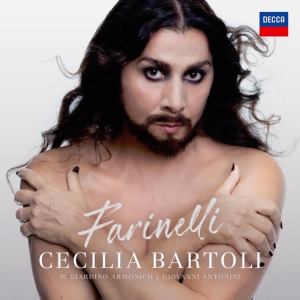





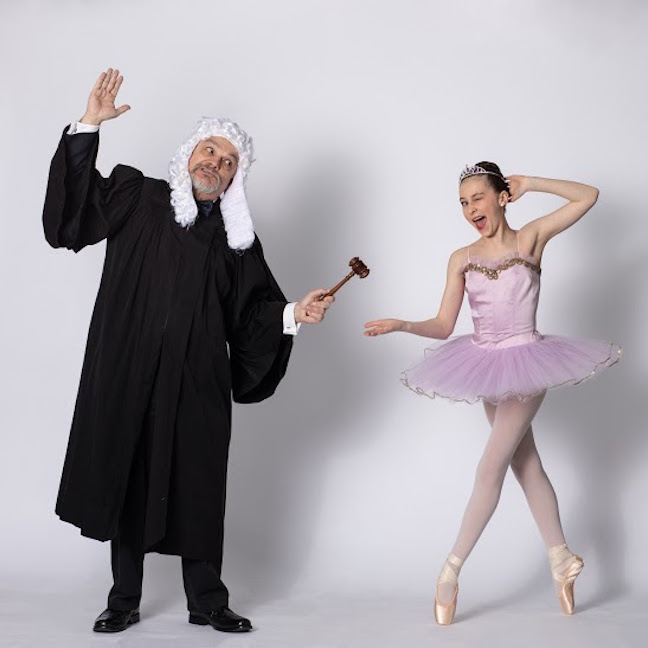

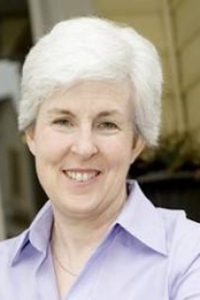
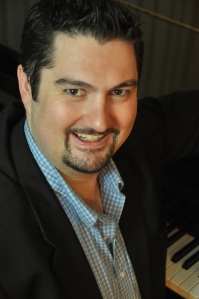
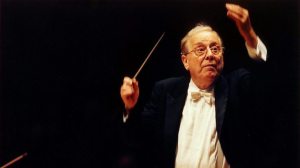

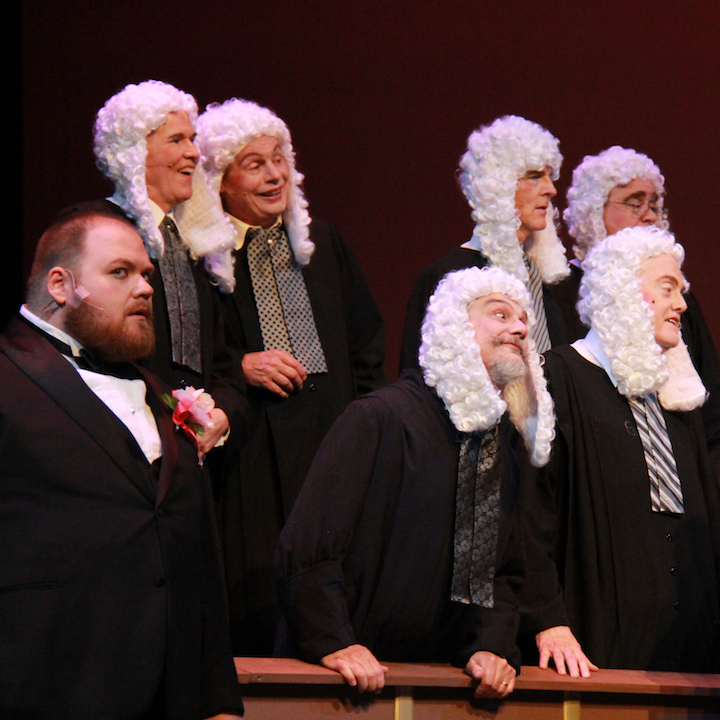
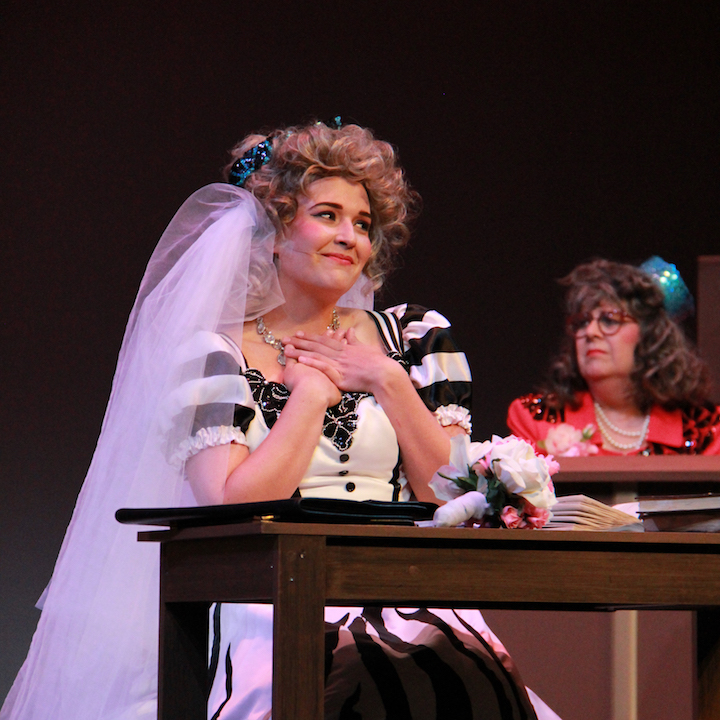





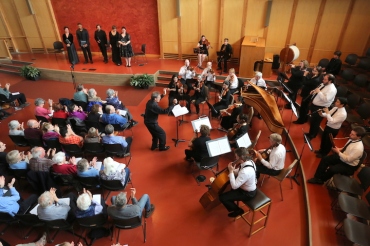
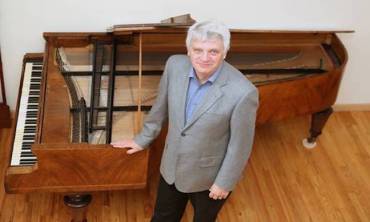
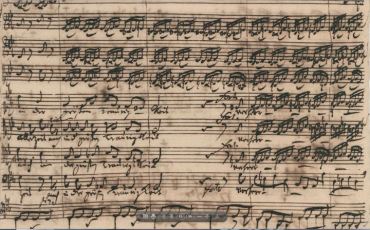


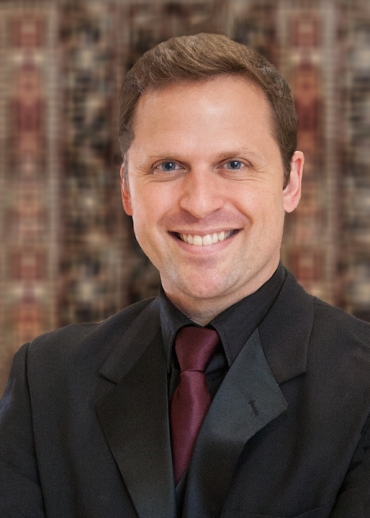

NPR names relevant classical albums in a musical Diary of the Plague Year of the pandemic, racial protests, wildfires and hurricanes
Leave a Comment
PLEASE HELP THE EAR. IF YOU LIKE A CERTAIN BLOG POST, SPREAD THE WORD. FORWARD A LINK TO IT OR, SHARE IT or TAG IT (not just “Like” it) ON FACEBOOK. Performers can use the extra exposure to draw potential audience members to an event. And you might even attract new readers and subscribers to the blog.
By Jacob Stockinger
For an unusual and difficult year, NPR (National Public Radio) and critic Tom Huizenga have found a new and unusual way to recommend this past year’s top classical music recordings.
On the “Deceptive Cadence” blog for NPR, Huizenga kept a personal month-by-month diary of “music and mayhem.”
For last February, for example, this ancient image of The Dance of Death inspired contemporary composer Thomas Adès to compose his own “Totentanz” or Dance of Death. (You can hear an excerpt from the work in the YouTube video at the bottom.)
Some of the thematically-related music is modern or contemporary, some of it is from the Baroque or Classical era.
In June, as protests against the death of George Floyd (below top) flared up and spread worldwide, NPR names a recording of the “Negro Folk Symphony” by African-American composers William Dawson and Ulysses Kay (below bottom), thereby helping to rediscover Black composers whose works have been overlooked and neglected in the concert hall and the recording studio.
Devastating wildfires on the West Coast, Presidential impeachment and hurricanes on the Gulf Coast also found their way into the choices of music to listen to.
It is an unusual approach, but The Ear thinks it works.
See and hear for yourself by going to the sonic diary and listening to the samples provided.
Here is a link to the NPR album diary: https://www.npr.org/sections/deceptivecadence/2020/12/21/947149286/music-and-mayhem-a-diary-of-classical-albums-for-a-troubled-2020
But many roads, if not all, lead to Rome, as they say.
What is also interesting is that a number of the NPR choices overlap with ones listed by music critics of The New York Times as the 25 best classical albums of 2020.
Some choices also are found on the list of the nominations for the Grammy Awards that will be given out at the end of January.
In other words, the NPR diary can also serve as yet another holiday gift guide if you have gift cards or money to buy some new and notable CDs, and are looking for recommendations.
Here is a link to the Times’ choices, which you can also find with commentary and a local angle, in yesterday’s blog post: https://www.nytimes.com/2020/12/17/arts/music/best-classical-music.html
https://welltempered.wordpress.com/2020/12/27/the-new-york-times-names-the-top-25-classical-recordings-of-2020-and-includes-sample-tracks/
And here is a list to the Grammy nominations: https://welltempered.wordpress.com/2020/11/28/for-holiday-shopping-and-gift-giving-here-are-the-classical-music-nominations-for-the-63rd-grammy-awards-in-2021/
What do you think of the NPR musical diary of the plague year?
Do you find it informative? Accurate? Interesting? Useful?
Would you have different choices of music to express the traumatic events of the past year?
The Ear wants to hear.
Share this:
Tags: #AbrahamLincoln, #African-AmericanComposer, #AlvinCole, #AmericanClassics, #AnnaClyne, #BaroqueMusic, #BerlinerBarockSolisten, #BerlinGermany, #BertrandChamayou, #Blackcomposers, #BlackMusic, #BlogPost, #BlogPosting, #BritishComposer, #BryceDessner, #C.E.P.Bach, #CarlPhilippEmanuelBach, #CarnegieHall, #CelloConcerto, #ChamberMusic, #ChoralMusic, #ChristianReligion, #ClariceJensen, #Classicalera, #ConcertHall, #ContemporaryMusic, #CoronavirusPandemic, #COVID-19, #DanceofDeath, #DavidLang, #DeceptiveCadence, #DonaldNally, #DonaldTrump, #DriftMutiply, #ElectronicMusic, #EnslavedPeople, #FacebookPost, #FacebookPosting, #FemaleComposer, #FerruccioBusoni, #FredericChopin, #FrenchMusician, #GeorgeFloyd, #GoodNight, #GrammyAward, #GrammyNominations, #GulfCoast, #HolidayGiftGuide, #HumanVoice, #iIanoConcerto, #InbalSegev, #JacobStockinger, #JesusChrist, #JonasKaufmann, #JustConstellations, #KirillGerstein, #LeopoldStokowski, #LeosJanacek, #LithuanianNationalSymphony, #LiveMusic, #LondonEngland, #LondonPhilharmonic, #MarinAlsop, #MassProtests, #MichaelHarrison, #MusicCritic, #MusicCritics, #NationalPublicRadio, #NaxosRecords, #NewMusic, #NewYorkCity, #NewYorkPhilharmonic, #NewYorkTimes, #OlegBezborodko, #OperaMusiclibretto, #OrchestralMusic, #PaulMoravec, #PhiladelphiaPennsylvania, #PianoConcertino, #PoliceShooting, #PoliticallyRelevant, #PresidentTrump, #ProtectYourselfFromInfection, #RacialJustice, #RecordedMusic, #RecordingStudio, #RoomfulofTeeth, #SanctuaryRoad, #SarahKirklandSnider, #SocialJustice, #SociallyRelevant, #SocialMedia, #SystemicRacism, #TenorSinger, #TheCrossing, #TheEar, #TheodoreRoosevelt, #ThomasAdès, #TomHuizenga, #TristanPerich, #UkrainianComposer, #UndergroundRailroad, #UnitedKingdom, #UnitedStates, #ValentinSilvestrov, #VikingurOlafsson, #VocalMusic, #WestCoast, #WilliamDawson, #WilliamGrantStill, #YouTubevideo, 2020, 2021, Abraham Lincoln, Adès, African American, Album, Alsop, Alvin Cole, American, American Classics, ancient, angle, anicent, Anna Clyne, April, Arts, audience, August, award, Bach, Baroque, Baroque music, beauty, behvaior, Berlin, Berliner Barock Solisten, Bertrand Chamayou, best, black, black music, blog, bond, British, British composer, Bryce Dessner, Busoni, C.P.E. Bach, cadence, California, call, Carl Philipp Emanuel Bach, Carnegie Hall, Catholic, cautionary, cellist, Cello, Cello Concerto, Chamber music, Child, Choir, Chopin, choral music, Christ, Christian religion, Christianity, Clarice Jensen, Classical era, Classical music, classicalmusic, Clyne, comfort, commentary, compelling, composer, Concert, concert hall, concerto, conductor, confrontation, Constellation, contemporary, coronavirus, dance, Dance of Death, David Lang, Davidsen, deals]new, death, December, Deceptive Cadence, diary, difficult, Donald Nally, Donald Trump, Drift Multiply, Early music, electronic, email, enslaved, enslaved people, ephemeral, escape, excerpt, Facebook, faith, fatal, fauna, February, Feburary, female, female composer, Ferruccio Busoni, flared, flora, folk, forward, fragility, France, Frédéric Chopin, freedom, French, George Floyd, Gerstein, gift, gift card, God, good night, Grammy, Gulf Coast, harmonie, Harrison, Holiday, holiday gift, holiday gift guide, hope, horrifying, human, human voice, Hurricane, image, impreachment, Inbal Segev, infection, inspire, Jacob Stockinger, Janacek, January, Jensen, Jesus, Jesus Christ, Jonas Kaufmann, June, Just Constellations, Kaufmann, Kirill Gerstein, l, Leopold Stokowski, Leos Janacek, life, like, Lincoln, link, Lise Davidsen, listen, Lithuania, Lithuanian National Symphony, live concert, live music, Living composer, living composers, local, London, London Philharmonic, lullaby, Marin Alsop, Masonic, mass, mayhem, me, mesmerizing, Michael Harrison, money, Moravec, Mother, motorcycle, Music, music critic, National Public Radio, nature, Naxos, Naxos Records, Negro, nerves, New Music, New York City, New York Philharmonic, New York Times, nocturnal, nocturne, nominations, November, NPR, October, Olafsson, Oleg Bezborodko, opera, oratorio, Orchestra, orchestral, pandemic, Paul Moravec, People, Perich, personal, Philadelphia, Pianist, Piano, Piano Concertino, planet, poetic, police shooting, Politics, positive, post, posting, precise, precision, President, President Trump, programming, protect, Protect Yourself From Infection, protest, race, racial justice, racism, rally, reality, recorded music, recording, recording studio, rediscover, relevant, Religion, repetition, response, Revelation, rising, Roomful of Teeth, sanctuary, Sanctuary Road, Sarah Kirkland Snider, September, share, signature, Silvestrov, sing, singer, smart, smooth, social justice, social media, solitude, sonic, sorrow, soundtrack, spread, statues, studio, sweet, symphony, systemic racism, tag, tangy, tenor, terminal, test, texture, The Crossing, The Ear, thematic, Theodore Roosevelt, Thomas Ades, thrill, times, Tom Huizenga, top, Totentanz, traditional, traumatic, trial, Tristan Perich, troubled, U.K., Ukraine, Ukrainian, Ukrainian composer, Ulysses Kay, Underground Railroad, unite, United Kingdom, United States, unusual, Valentin Silvestrov, Vikingur Olafsson, Violin, violinist, vocal music, voice, west coast, wildfire, William Dawson, William Grant Still, Wisconsin, witty, woman, work, worldwide, year, yesterday, YouTube